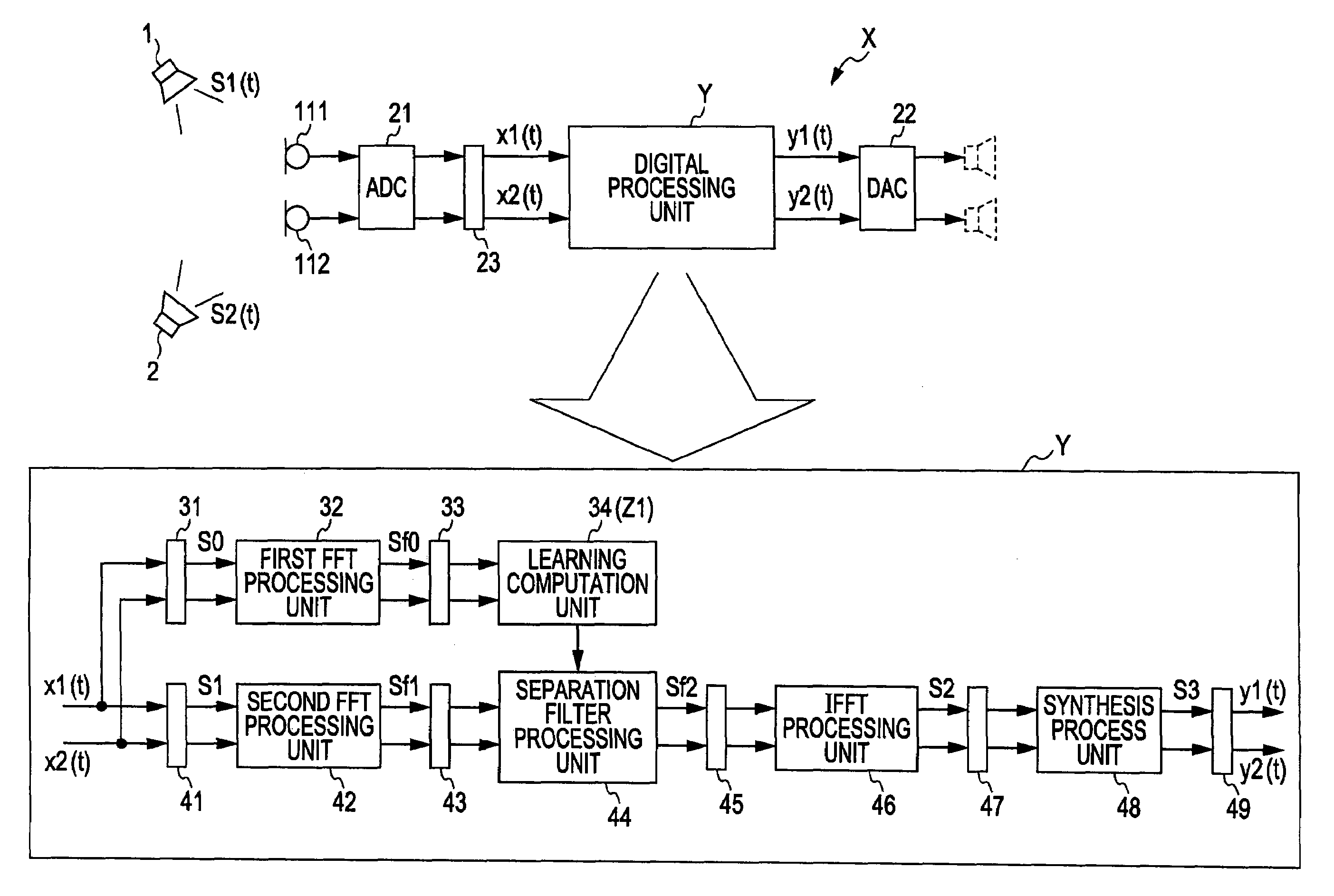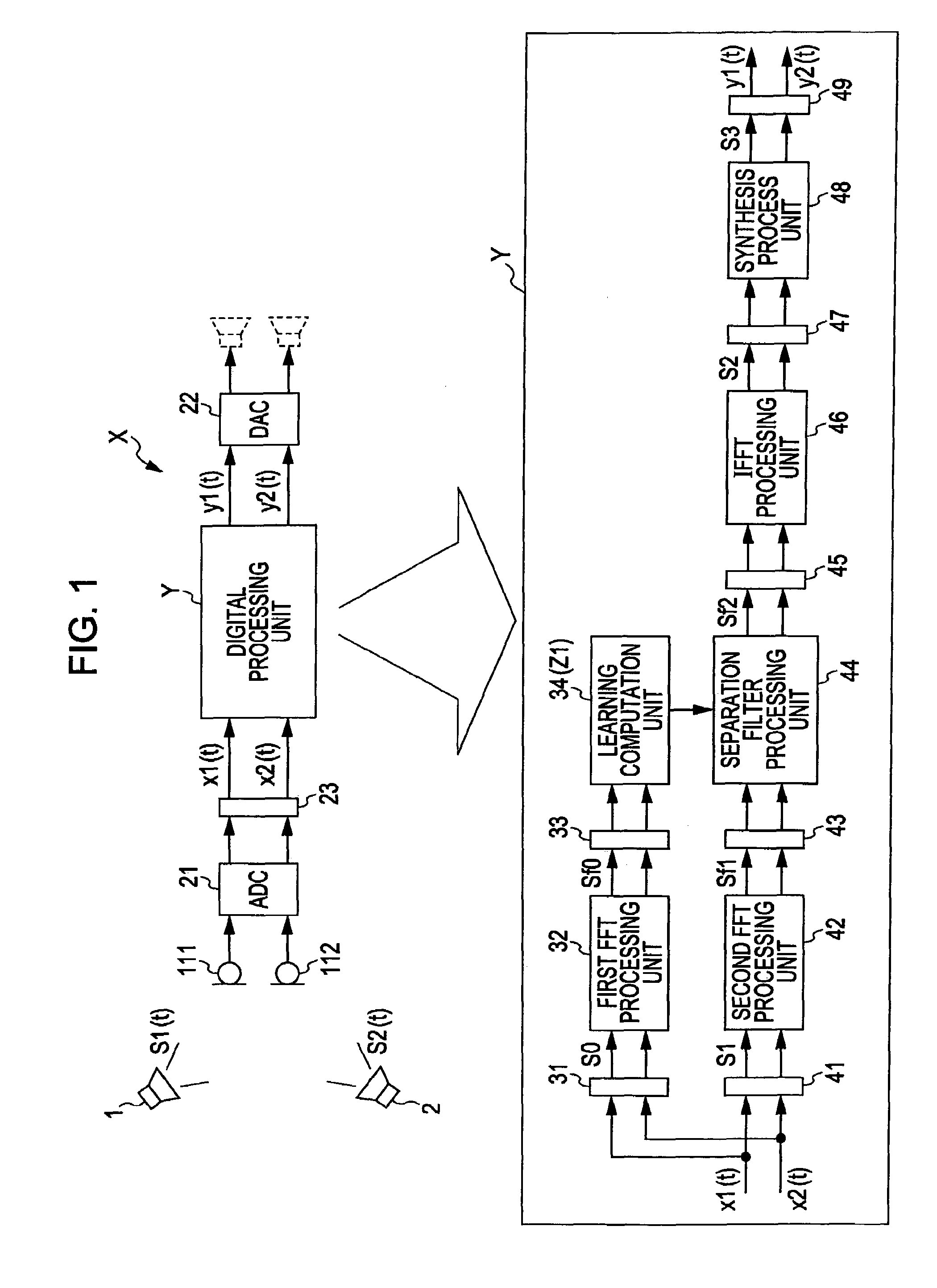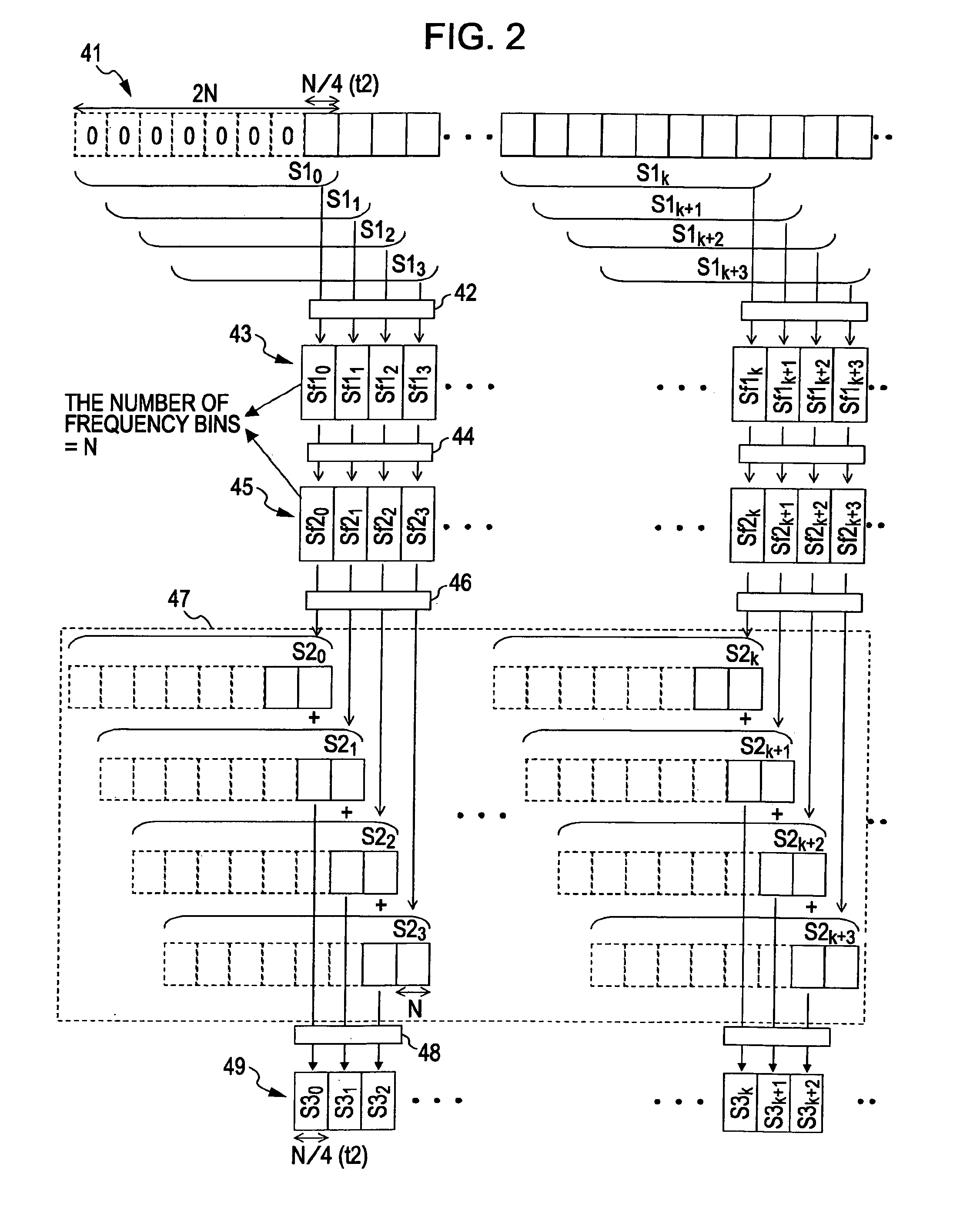Sound source separation apparatus and sound source separation method
a separation apparatus and sound source technology, applied in the direction of amplifier details, instruments, transmission, etc., can solve the problems of unpractical, unsuitable real-time process, and total delay time becomes 242 [msec], so as to shorten achieve high sound source separation performance. , the effect of shortening the time of output delay
- Summary
- Abstract
- Description
- Claims
- Application Information
AI Technical Summary
Benefits of technology
Problems solved by technology
Method used
Image
Examples
first embodiment (refer to figs.1 and 2)
First Embodiment (Refer to FIGS. 1 and 2)
[0088]Hereinafter, with reference to a block diagram illustrated in FIG. 1, a description will be given of a sound source separation apparatus X according to an embodiment of the present invention. It should be noted that the following embodiment is an example that embodies the present invention, and does not have a nature of limiting the technical range of the present invention. The sound source separation apparatus X is connected to the plurality of microphones 111 and 112 (the sound input units) arranged in an acoustic space where the plural sound sources 1 and 2 are present.
[0089]Then, the sound source separation apparatus X sequentially generates, from the plurality mixed sound signals xi(t) that are sequentially input through the respective microphones 111 and 112, a separation signal (that is, a signal in which a sound source signal is identified) yi(t) corresponding to at least one of the sound sources 1 and 2 is separated (identified...
second embodiment (refer to fig.3)
Second Embodiment (Refer to FIG. 3)
[0149]Next, while referring to FIG. 3, a description will be given of the filter process according to a second embodiment by the sound source separation apparatus X. FIG. 3 is a block diagram illustrating a flow of the filter process by the sound source separation apparatus X (the second embodiment).
[0150]A difference between the filter process according to this second embodiment and the filter process according to the first embodiment resides in that the number of samples of the second time-domain signal S1 is small (the time length of the signal is short). That is, according to this second embodiment, the number of samples of the second time-domain signal S1 is set shorter than the number of samples of the first time-domain signal S0. This is the same meaning as that the time length of the second time-domain signal S1 is set shorter than the time length of the first time-domain signal S0.
[0151]In the example illustrated in FIG. 3, the number of s...
PUM
 Login to View More
Login to View More Abstract
Description
Claims
Application Information
 Login to View More
Login to View More - R&D
- Intellectual Property
- Life Sciences
- Materials
- Tech Scout
- Unparalleled Data Quality
- Higher Quality Content
- 60% Fewer Hallucinations
Browse by: Latest US Patents, China's latest patents, Technical Efficacy Thesaurus, Application Domain, Technology Topic, Popular Technical Reports.
© 2025 PatSnap. All rights reserved.Legal|Privacy policy|Modern Slavery Act Transparency Statement|Sitemap|About US| Contact US: help@patsnap.com



